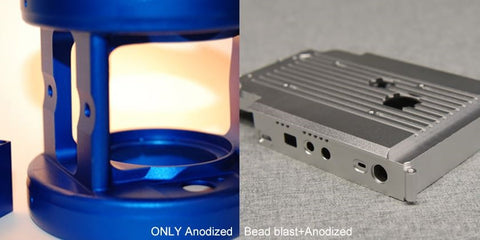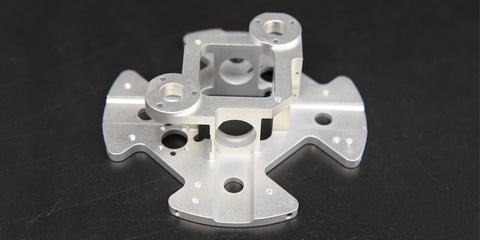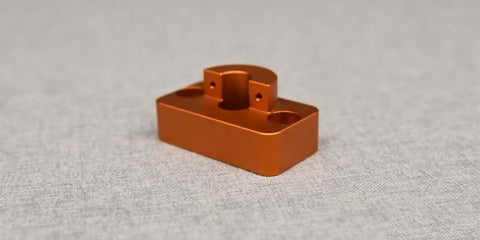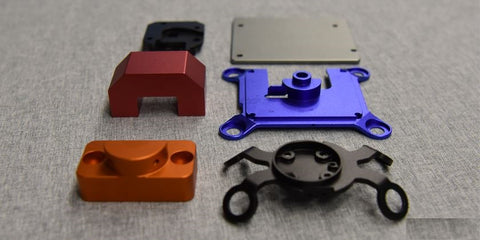Anodized is the electrochemical oxidation of metals or alloys. Under the corresponding electrolyte and specific process conditions, aluminum and its alloys form a layer of oxide film on aluminum products ( anodes ) due to the applied current. Usually refers to sulfuric acid anodized. In order to overcome the defects of surface hardness and wear resistance of aluminum alloy, expand the application range and prolong the service life, surface treatment technology has become an indispensable part of aluminum alloy, and Anodizing technology is the most widely use. The so-called anodized of aluminum is a process of electrolytic oxidation. In this process, the surface of aluminum and aluminum alloy is usually transformed into an oxide film, which has protective, decorative and some other functional properties. The anodized of aluminum from this definition only includes the process of forming anodize oxide film. The metal or alloy parts are used as anodes to form oxide films on the surface by electrolysis. Metal oxide films change the surface state and properties, such as surface coloring, improve corrosion resistance, enhance wear resistance and hardness, protect the metal surface, etc.

Advantages of Anodized :
The thickness of the oxide film obtained by anodized is generally 5 – 20μm, and the thickness of the hard anodic oxide film can reach 60 – 2500μm. The film also has the following characteristics :
( 1 ) High hardness. The hardness of pure aluminum oxide film is higher than that of aluminum alloy oxide film. Usually, its hardness is related to the alloy composition of aluminum and the technical conditions of electrolyte during anodized. The anodize oxide film not only has high hardness, but also has good wear resistance. In particular, the porous oxide film on the surface has the ability to adsorb lubricants, and can further improve the wear resistance of the surface.
( 2 ) High corrosion resistance. This is because the anodize oxide film has high chemical stability. After testing, the anodize oxide film of pure aluminum has better corrosion resistance than that of aluminum alloy. This is because the alloy composition inclusion or the formation of metal compounds cannot be oxidized or dissolved, which makes the oxide film discontinuous or generates voids, so that the corrosion resistance of the oxide film is greatly reduced. Therefore, the film obtained after anodized must be sealed to improve its corrosion resistance.
( 3 ) It has strong adsorption capacity. The anodize oxide film of aluminum and aluminum alloy is porous structure and has strong adsorption capacity, so filling various pigments, lubricants, resins in the hole can further improve the protection, insulation, wear resistance and decorative properties of aluminum products.
( 4 ) The anodize oxide films of aluminum and aluminum alloys do not possess the conductive properties of metals and become good insulation materials.
( 5 ) The ability of adiabatic heat resistance is strong. Because the thermal conductivity of anodize oxide film is much lower than that of pure aluminum. Anodize oxide film can withstand about 1500 °C, while pure aluminum can only withstand 660 °C. The oxide film formed on the surface of aluminum and aluminum alloy after chemical oxidation, especially anodized , has good protective and decorative properties. Therefore, it is widely used in aviation, electrical, mechanical manufacturing and light industry.
Bead blast treatment before Anodized :
Before anodized of the work-piece, bead blast is usually performed. The so-called bead blast treatment mainly refers to the high-speed spraying of the spray material on the surface of the work-piece to be treated with compressed air as the power, so as to change the appearance or shape of the surface, and improve the durability and decoration.
 Advantages of bead blast:
Advantages of bead blast:
( 1 ) Treatment of work-piece coating and bonding
bead blast can remove all dirt such as rust on the surface of the work-piece, and establish a very important basic schema (the so-called rough surface ) on the surface of the work-piece. Moreover, it can achieve different degrees of roughness by changing abrasives with different particle sizes, and greatly improve the binding force of the work-piece paint and plating.
( 2 ) Cleaning and polishing of casting and forging parts after heat treatment
bead blast can clean up all the dirt (such as oxide skin, oil and other residues) on the surface of casting and forging parts and heat treatment, and polishing the surface of the work-piece to improve the smoothness of the work-piece, which plays a role in beautifying the work-piece.
( 3 ) Machining burr cleaning and surface beautification
Sand blasting can clean up the small burrs on the surface of the work-piece, and make the surface of the work-piece more flat, clean up the harm of burrs, and improve the grade of the work-piece. Moreover, bead blast can make a small fillet at the interface of the work-piece surface, making the work-piece more beautiful and accurate.
( 4 ) Light Decoration
Polishing various work-piece surfaces to make the work-piece surface more beautiful and make the work-piece smooth without reflection requirements. For some special purpose work-piece, bead blast can achieve different reflection or sub-light at will. Such as stainless steel work-pieces, wood furniture surface sub - light, ground glass surface pattern, and cloth surface wool processing.

PCBWay provide service including PCB Prototype & Batch Production, PCB Assembly (SMT), PCB Design, Electronics Modules Selling, 3D Printing, CNC Machining etc. We are committed to meeting the needs of global makers from different industries in terms of quality, delivery, cost-effectiveness and any other demanding requests in electronics.
Get an online Quote
Product Showcase(Bead blast+Anodized):




Related Posts:
1.How To Distinguish CNC machining Surface Roughness Between 6.3 And 0.8?
2.SPI Mold Finish: Surface Finish For Injection Molded Parts

